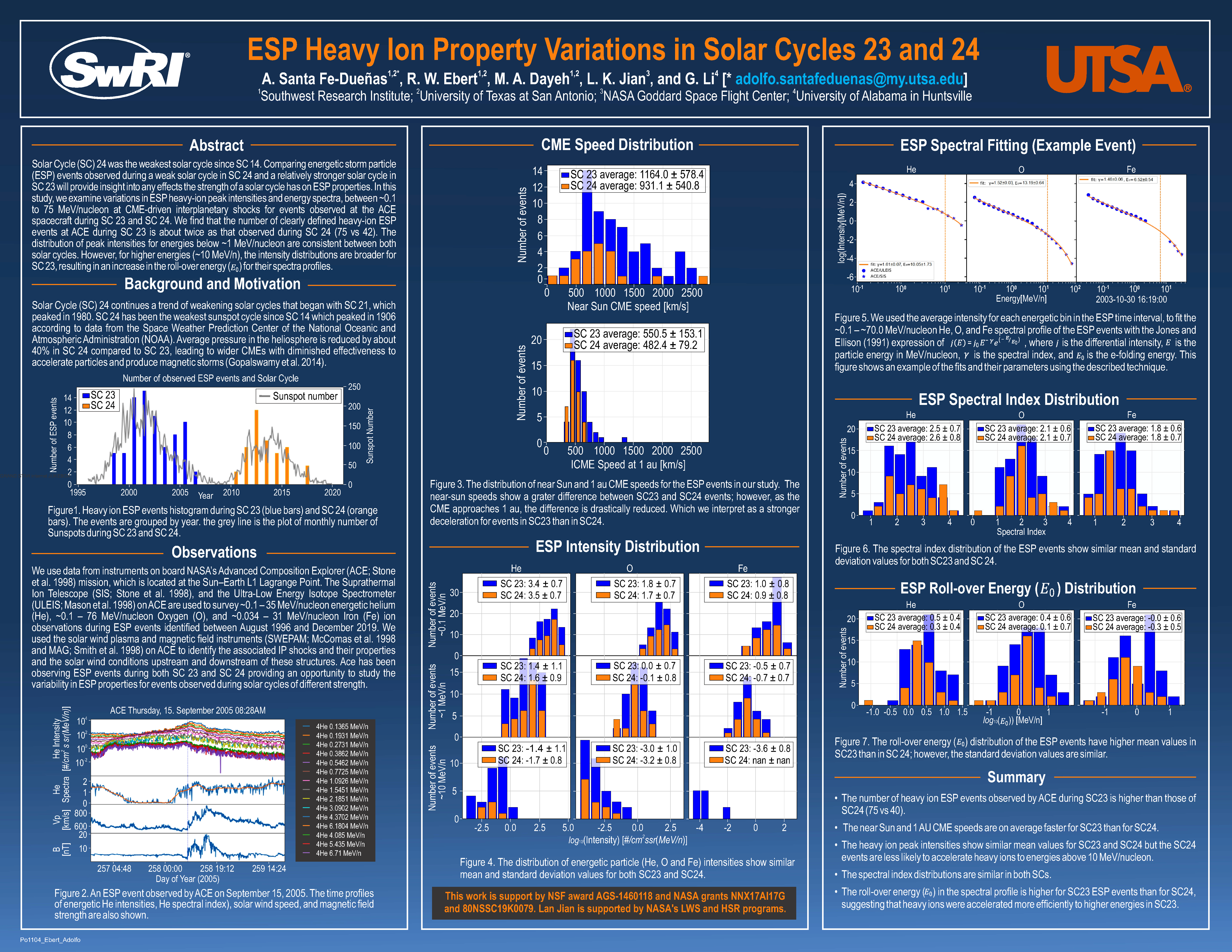Authors: Adolfo Santa Fe Dueñas (University of Texas at San Antonio / Southwest Research Institute), Robert W. Ebert ( Southwest Research Institute / University of Texas at San Antonio), Maher. A. Dayeh ( Southwest Research Institute / University of Texas at San Antonio), Mihir I. Desai ( Southwest Research Institute / University of Texas at San Antonio), Lan K. Jian (Heliophysics Science Division, NASA Goddard Space Flight Center), Gang Li (University of Alabama in Huntsville)
Solar Cycle (SC) 24 was the weakest solar cycle since SC 14. Comparing energetic storm particle (ESP) events observed during a weak solar cycle in SC 24 and a relatively stronger solar cycle in SC 23 will provide insight into any effects the strength of a solar cycle has on ESP properties. In this study, we examine variations in ESP heavy-ion peak intensities and energy spectra, between ~0.1 to 75 MeV/nucleon at CME-driven interplanetary shocks for events observed at the ACE spacecraft during SC 23 and SC 24. We find that the number of clearly defined heavy-ion CME-driven ESP events at ACE during SC 23 is about twice that observed during SC 24 (75 vs 42). The distribution of peak intensities for energies below ~1 MeV/nucleon is consistent between both solar cycles. However, for higher energies (~10 MeV/n), the intensity distributions are broader for SC 23, resulting in an increase in the roll-over energy (Eo) for their spectra profiles.


